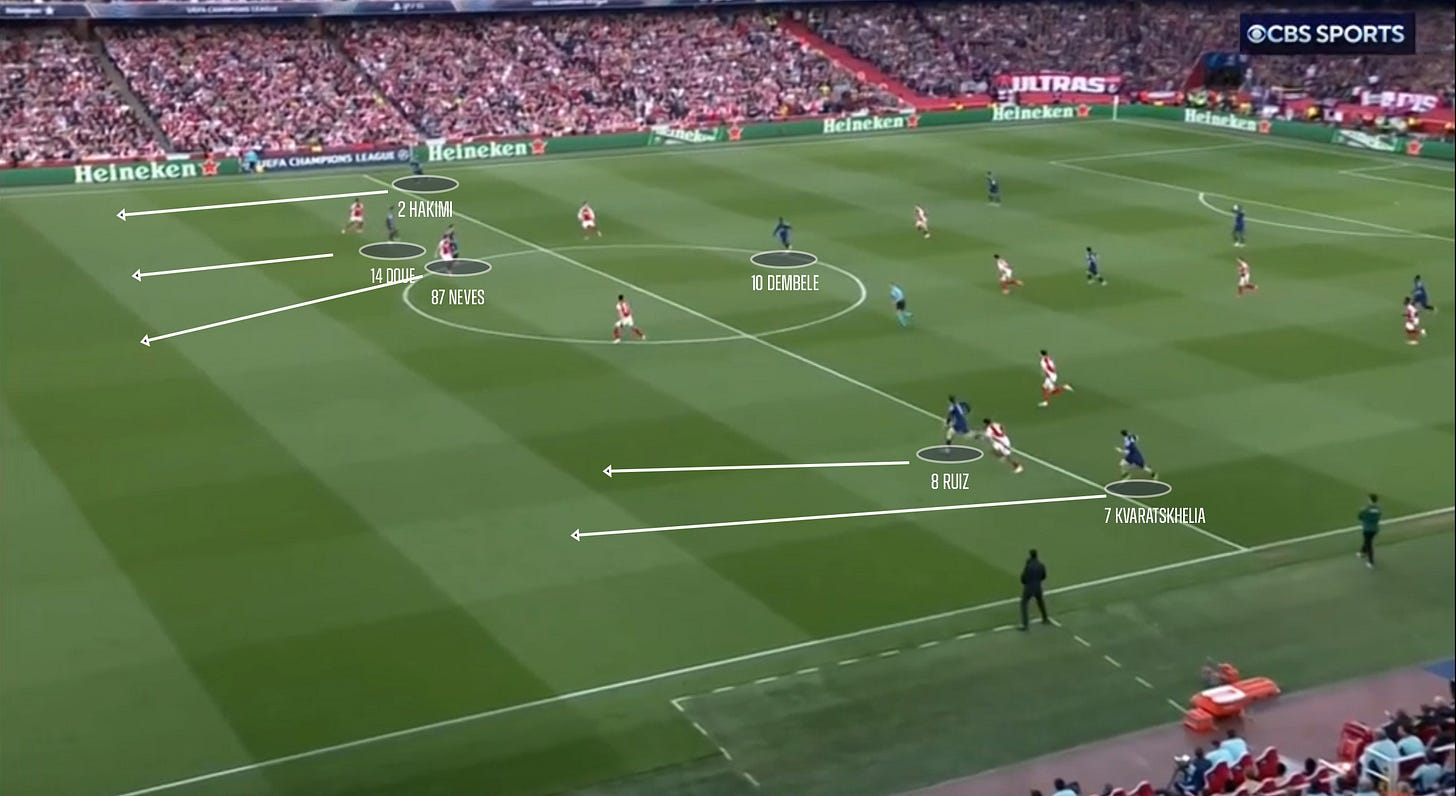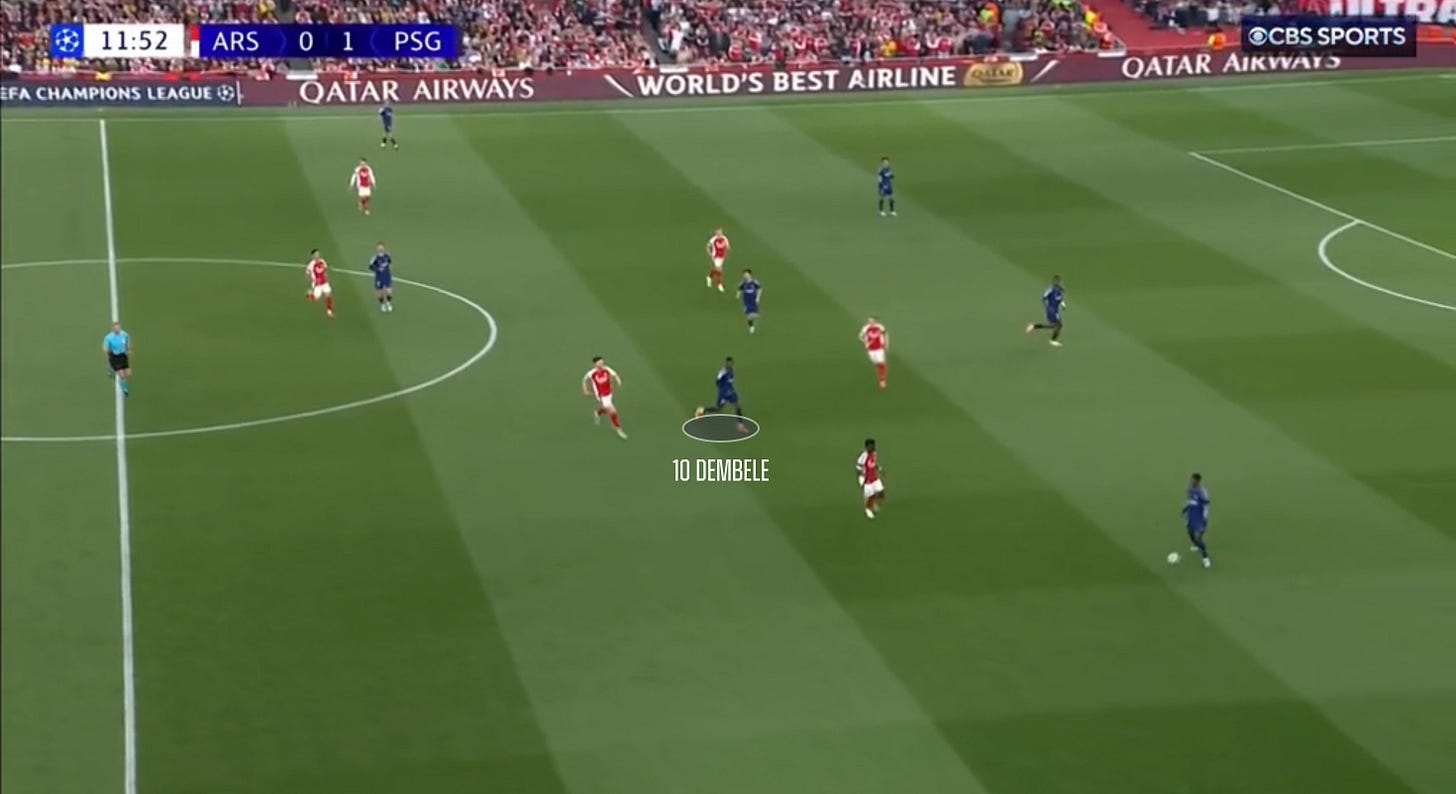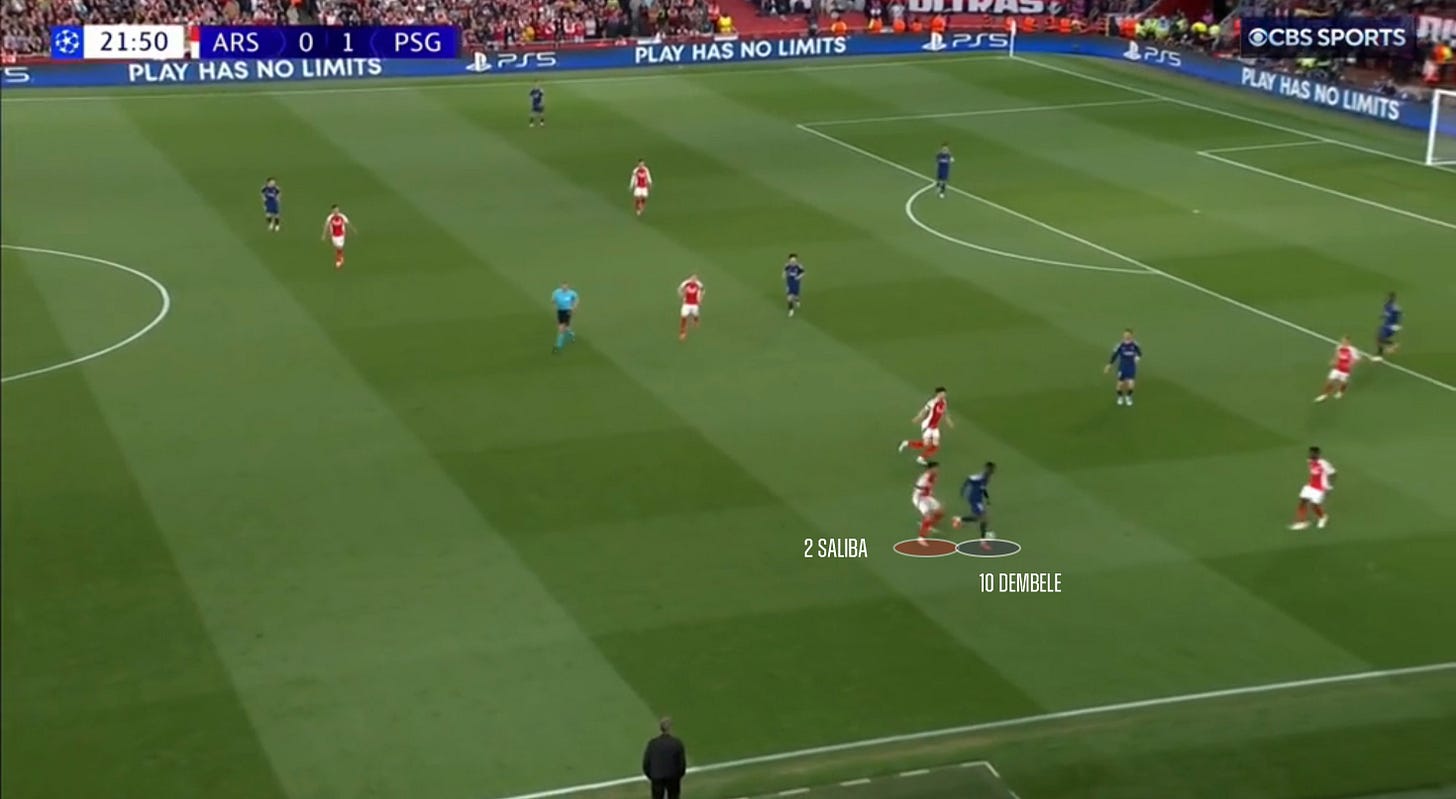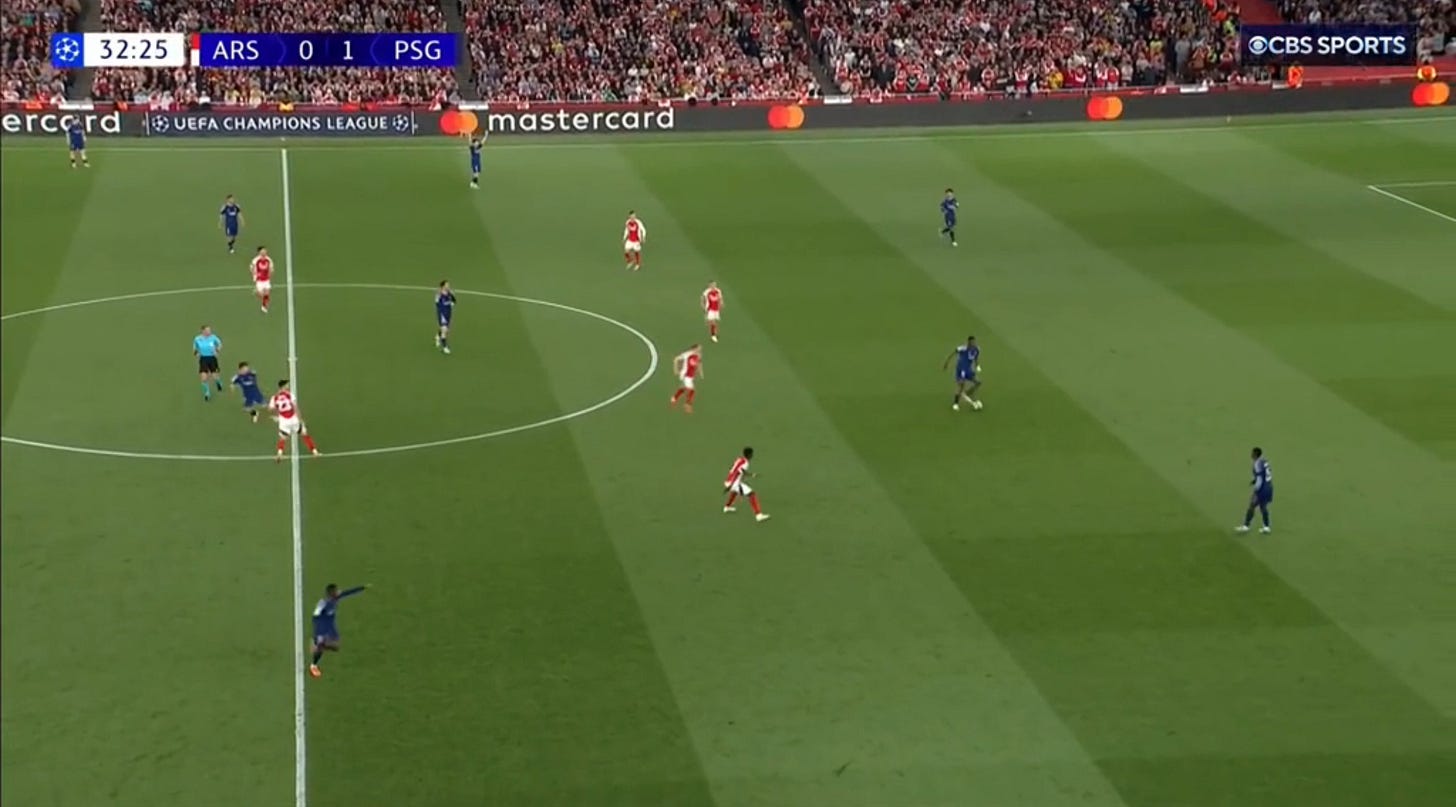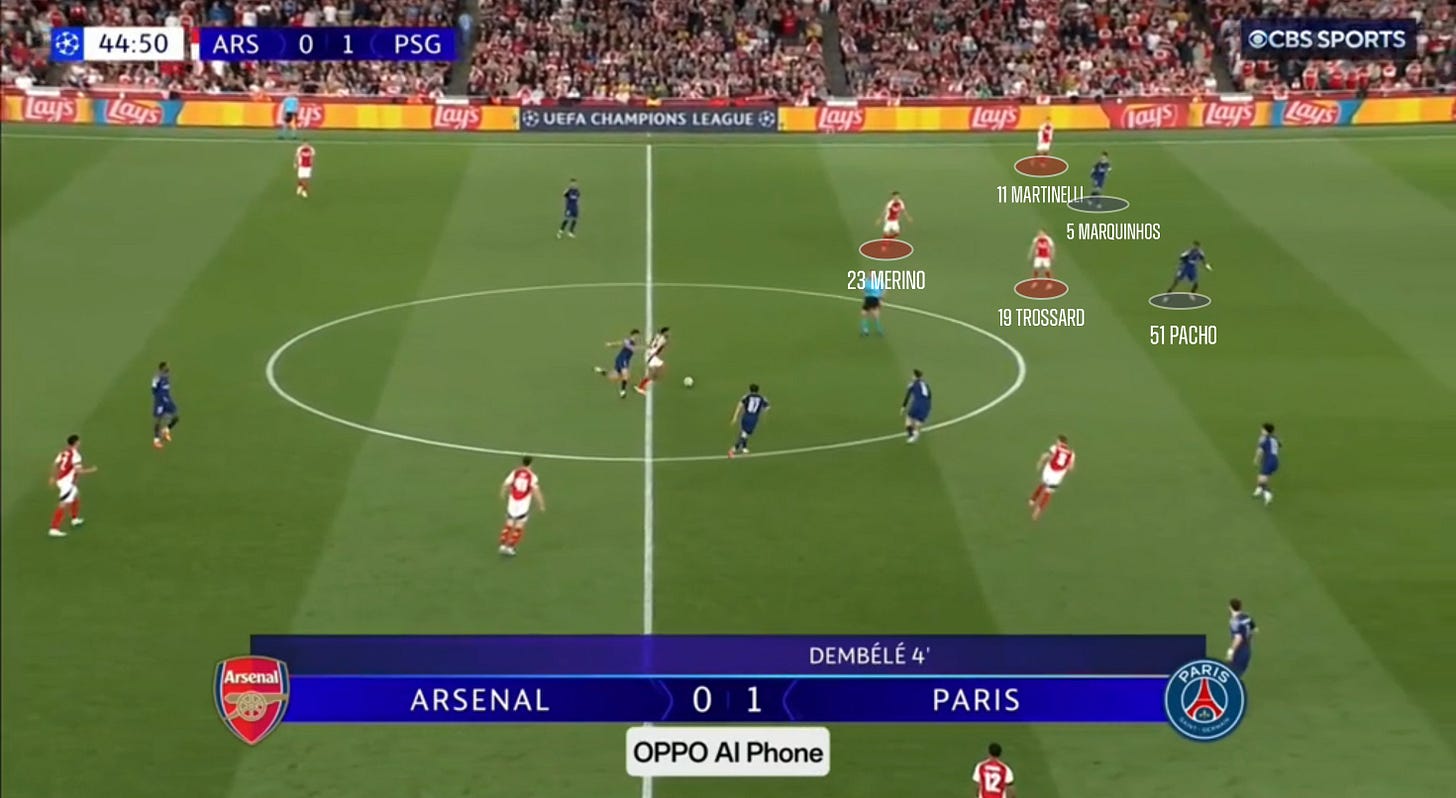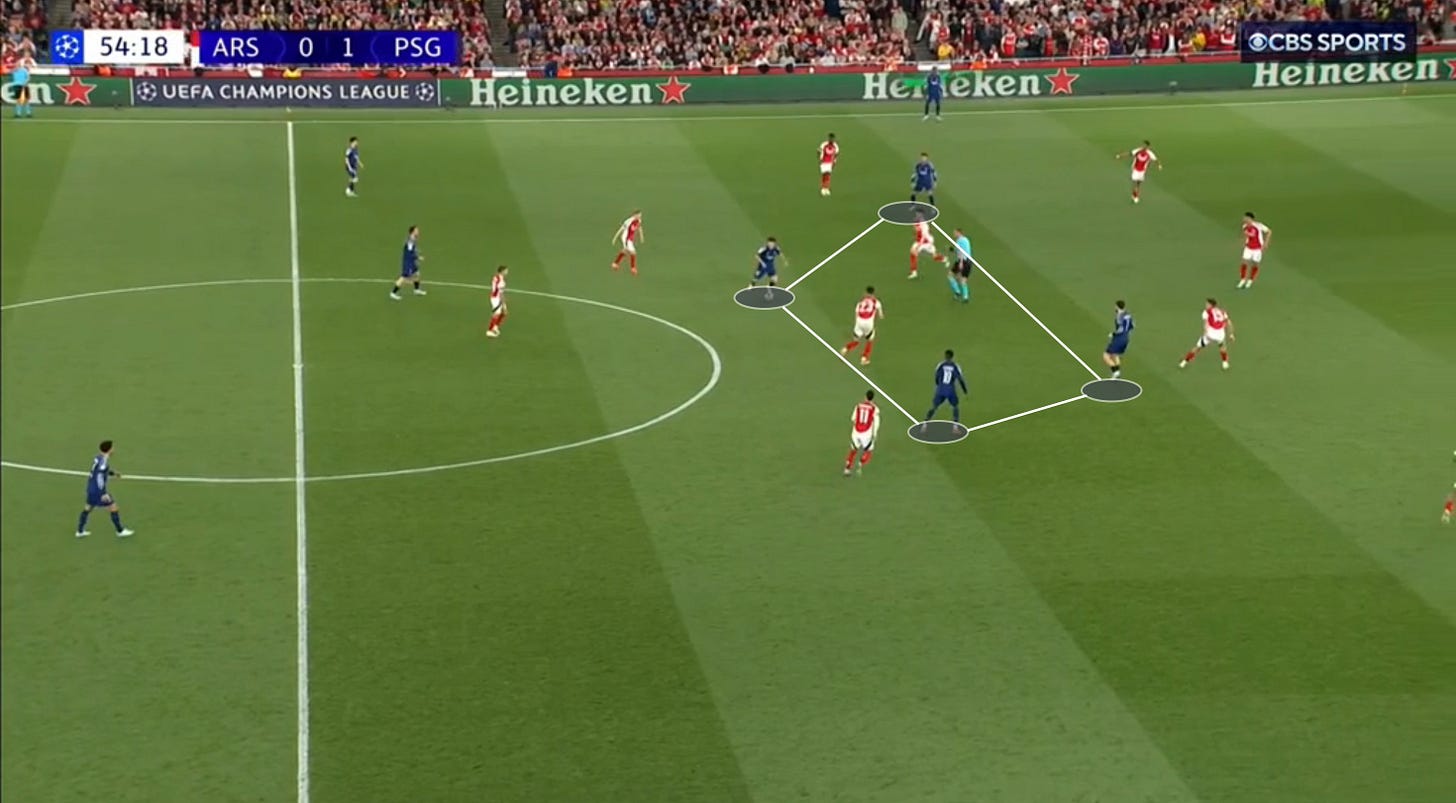It was a fascinating tactical encounter between Luis Enrique and Mikel Arteta. Arsenal had beaten PSG 2-0 earlier this season and completely shut down one of the best attacks in Europe.
However, PSG made some tactical tweaks that allowed them to see out a 1-0 win at the Emirates and gave themselves a massive opportunity to the Champions League final.
Let’s dive in.
First Half
What was interesting from Arsenal is most of the night they were doing a delayed press (I don’t know the technical term). Basically the front of the press gave PSG time and space on the ball and allowed the midfielders come up and latch onto PSG’s midfielders.
The goal was to eventually pin them in the corner like this so PSG is forced to either turn it over or send it long.
PSG didn’t take long to open the scoring and the answered one of my questions, which was how are they going to drop Dembele in deep. Well, the simple answer is overload the last line of defense.
What I want you to notice is PSG overloading four guys on the right hand side. What that did was pin Kiwor to Neves, which allowed Dembele to drop in to receive the ball.
With time and space to carry the ball, PSG have a free run with a numerical advantage at Arsenal.
Dembele is able to draw in an Arsenal defender, while Ruiz makes a run to drag Timber with him to free up Kvaratskhelia out wide to get 1 v 1 against Timber.
Kvaratskhelia drew Rice into help Timber, which freed up space for a pass to Dembele, who rifled it into the perfect spot. Post-Shot xG on the goal was 0.48.
It was pretty clear that PSG wanted to continually get Dembele on the ball. He is not only their leading goal scorer, but also leads them in progressive carries.
As my good friend Jon Mackenzie pointed out during the match, Arsenal switched their press to have Odegaard covering the pivot zone (Vitinha most of the time).
image via Jon Mackenzie on X
Here is an example:
Along with Odegaard covering the middle pivot, Arsenal started to commit more bodies forward in the press. Dembele was no longer given free runs, as Saliba started tracking him.
With a one goal lead, PSG was making sure they had a numerical advantage during the second phase of build up.
This basically asked questions of how aggressive Arsenal wanted to be once they fell into their midblock with your back line. PSG were happy to maintain possession and pass the ball around.
One thing that was noticeable is the positioning of Merino was asking questions of PSG. Marquinhos was basically playing right back so that PSG could get Hakimi forward in possession and didn’t leave him 1 v 1 against Martinelli.
By doing that though, Arsenal were able to create a 3 v 2 out wide in this scenario and play Martinelli in behind.
Second Half
Set Pieces played a crucial role in this match and it’s clear that Arsenal have a massive advantage. Right away starting off the second half they had a set piece VAR’d off using their usual routine.
Everytime Arsenal had a set piece PSG was struggling to pick up guys and because they are not a physically dominant team in the air, they were extremely vulnerable all night long from set plays.
Throughout most of the second half, PSG was using these type of four or three man combinations all over the pitch to quickly play through Arsenal. However, they weren’t having much luck actually getting through and creating high quality chances.
Arsenal recognized that Marquinhos was tasked with marking Martinelli, so they started to use their own position rotations.
Here, Martinelli makes a run centrally to pull Marquinhos with him, which frees up acres of space out wide for Trossard to run into and almost puts it in the back of the net.
As the match progressed PSG started to sit deeper and deeper. They played a very compact 4-4-2 low block, so Arsenal started to invert Bakayo Saka into the middle to get him on the ball, which allowed Arsenal’s fullbacks to push up high and provide width.
PSG was happy to let Arsenal try and cross the ball into the box and the Gunners were not successful with only one of their 14 crosses finding an Arsenal player in the penalty area.
PSG had a couple of huge chances late on and this is something you may see in the second leg. Ramos (a more traditional striker) came on for Doue and started making runs in behind.
He hit the crossbar, which could have given PSG a two goal advantage heading back to France.
Conclusion
While from an xG standpoint you could say PSG were “lucky” to walk away with a one goal advantage, you have to give them a lot of credit for the way they defended in the second half.
Luis Enrique learned his lesson from Aston Villa and took a very low risk approach in the second half, daring Arsenal to try and break down their low block. There have been very few instances where PSG have played a low block this season, but they did an admirable job. After the Trossard chance in the 56th minute, Arsenal were only able to take two shots for the match.
image via fbref.com
With Thomas Parety coming back from suspension, you’d have to imagine that Merino plays as the false nine in the second leg. Arsenal is not really a team designed to play from behind and has struggled breaking down low blocks this season.
We will see how conservative PSG is in the second leg or if they decide to go for the kill shot.
Either way, it sets up an exciting 90 minutes in Paris for a trip to the Champions League final.








